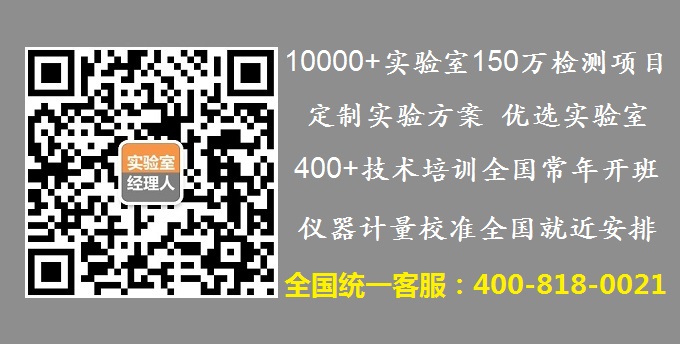您当前的位置:检测资讯 > 实验管理
嘉峪检测网 2024-05-28 08:11
The question whether a disinfected surface has to be kept wet for the duration of the exposure time has reached us time and again. It seems like a statement keeps going around about this being a regulatory requirement.
消毒过的表面是否必须在暴露时间内保持湿润的问题一次又一次地出现在我们面前。似乎有一种说法一直在说这是一项监管要求。
However, this isn't described in any European regulations known to us. It is not correct that the EN method is described thusly, either. The EN generally doesn't intend for surfaces to be kept wet during the exposure time. In accordance with EN 13697, though, exposure times lie at 5 min for bacteria and 15 min for yeasts and molds. Since 100 µl of disinfectant are applied to the surfaces, they almost always stay wet during this short exposure time. The norms therefore do not specify the wetting time, but the amount of disinfectant to be applied in a test. After that, one lets the product take effect for the specified exposure time (no matter whether the surface dries during that time or stays wet). The same goes for longer exposure times as found in national listings like the disinfectant list of theVAH (Germany), the listing of AFNOR or the product specifications of many disinfectants.
然而,这在我们所知的任何欧洲法规中都没有描述。欧洲标准(EN: European Norm)方法也没有这样的描述,欧洲标准通常不打算在暴露时间内保持表面湿润。但是,根据EN 13697,细菌的暴露时间为5分钟,酵母和霉菌的暴露时间为15分钟,由于将100 μ l的消毒剂喷洒于表面,因此在短时间内它们几乎总是保持湿润的。因此,标准没有规定湿润时间,而是规定了在测试中使用的消毒剂的量。之后,让产品在规定的暴露时间内生效(无论在此期间表面是干燥还是保持湿润)。同样的情况以下国家规定的暴露时间持续更长,如VAH(德国)的消毒剂清单,AFNOR(法国)的清单或许多消毒剂的产品规格。
Now, there may be concerns in practice that the application in rooms/cleanrooms with an elevated air exchange rate will result in significantly faster drying in practice than during test methods (or during validation on a laboratory scale) and that the efficacy of the disinfection procedure might actually be negatively affected. In that case the monitoring data of long-standing procedures should provide insight into whether there actually is a lack of efficiency. Is that the case - or when a new disinfection procedure is being implemented - the actual drying time on site could be determined and the reduction during that time assessed in the laboratory testing/validation. This would mean that during laboratory testing, the disinfectant would be deactivated after the determined drying time in practice and the efficacy tested. If this is case and the reduction actually isn't sufficient, an increased concentration could be a way to shorten the exposure time.
现在,在实践中可能会担心在空气交换率较高的房间/洁净室中应用会导致实际干燥速度明显快于测试方法(或在实验室规模上验证),并且消毒程序的功效实际上可能会受到负面影响。在这种情况下,对长期程序的监测数据应有助于了解是否确实缺乏效率。在这种情况下,或者在实施新的消毒程序时,可以确定现场的实际干燥时间,并在实验室测试/验证中评估该时间内的减少情况。这意味着在实验室测试期间,消毒剂将在实际确定的干燥时间和效力测试后失效。如果是这种情况,减少实际上是不够的,增加浓度可能是一种缩短暴露时间的方法。
In general, however, it is valid that a disinfecting agent which has been applied to a microorganism cell maintains its effect on/in a cell even after the environment has dried.
然而,一般来说,即使环境已经干燥,应用于微生物细胞的消毒剂在细胞上保持其作用也是有效的。
It also needs to be considered that the microorganism concentration in a laboratory test is significantly higher than the germ count in an actual clean room (106 cells, depending in the method). For that reason, even with a lowered reduction rate on a laboratory scale, the limits normally set aren't exceeded in practice, and the monitoring values comply with the requirements.
还需要考虑的是,实验室测试中的微生物浓度明显高于实际洁净室中的细菌数量(106个细胞,具体取决于方法)。因此,即使在实验室规模的减少率偏低,在实践中也没有超过通常设定的限值,监测值符合要求。
以上是ECA在2017年9月发布的文章,新版EU GMP附录1在2023年8月25日生效,博主未在其中找到需要保持湿润的规定。

中国GMP第一百四十三条规定:清洁方法应当经过验证,证实其清洁的效果,以有效防止污染和交叉污染。清洁验证应当综合考虑设备使用情况、所使用的清洁剂和消毒剂、取样方法和位置以及相应的取样回收率、残留物的性质和限度、残留物检验方法的灵敏度等因素。
在2023版中国GMP指南上册《无菌制剂》中有提到:消毒剂接触时间(润湿时间)应经过验证,并在实际操作中建立手段控制并监控是否达到规定的接触时间限度。


来源:Internet


